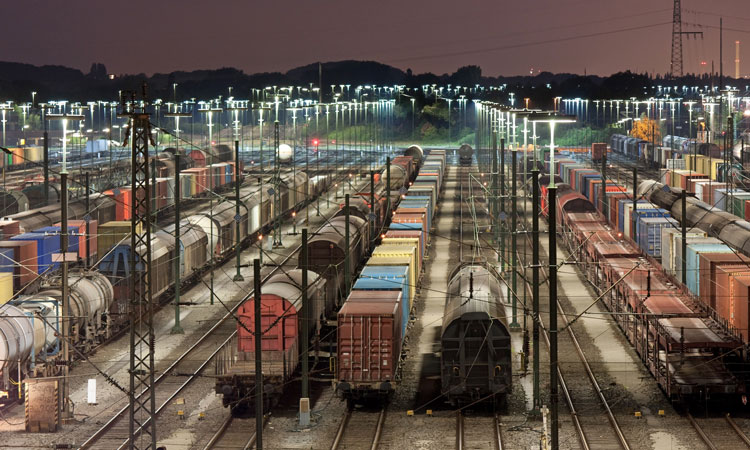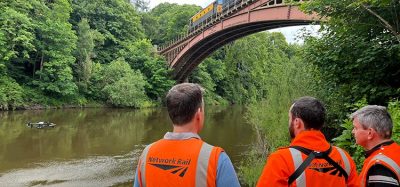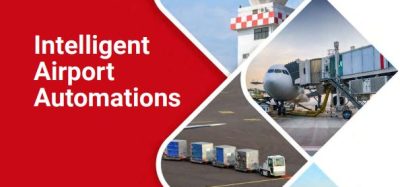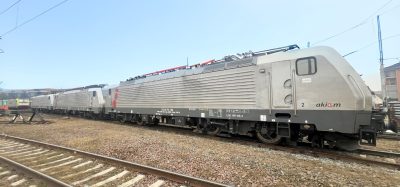Europe’s rail industry joins to support deployment of Digital Automatic Coupling
Posted: 18 September 2020 | Global Railway Review | 1 comment
Rail Freight Forward members and sector associations have welcomed an MoU for the development of European Digital Automatic Coupling (DAC) for rail freight.


In order to achieve the goals of the European Green Deal, rail freight transport plays an essential role in the European mobility system of the future. Shifting freight traffic to rail is the fastest and most efficient way to combat the ever-increasing CO2 emissions. To achieve this modal shift, infrastructure capacities, the general competitiveness of railways and therefore cost-efficiency and productivity in rail must be increased. This requires a fundamental transformation of the sector towards automation and digitalisation.
In this regard, Rail Freight Forward (RFF) – a coalition of European rail freight companies that are committed to drastically reducing the negative impact of freight transport on the planet and mobility through innovation and a more intelligent transport mix – promotes the renewal of rail freight through technological pillars such as European Railway Traffic Management (ERTMS), Automatic Train Operation (ATO), digital platforms and Digital Automatic Coupling (DAC), as well as infrastructure measures offering rail freight capacity and frequency to attract clients from road transport.
DAC is considered the unique chance to revolutionise European rail freight transport, as it is the essential element to transform railway operations management. DAC brings more capacity for shifting freight transport to rail through new technologies and innovations, thus providing a foundation for climate protection and economic growth. As a key enabler for further digitalisation and automation of the European rail system, it is a prerequisite to significantly increase rail freight’s share of the modal split to 30 per cent by 2030 and therefore comply with the Green Deal. With the signing of a Memorandum of Understanding (MoU), the sector aims to promote DAC throughout Europe and fully supports the ambitions of the German Council Presidency on implementing DAC across Europe.
Why Europe needs Digital Automatic Coupling (DAC)
As coupling/decoupling is one of the two main procedures in train operations (train assembly, train driving), its automation is of utmost importance. Europe is trailing the world in this respect, as it is the last continent to use standard manual couplers. The sector propose to fully deploy the DAC technology latest until 2030 which will significantly improve competitiveness of the rail sector’s operations by providing electricity and data bus line across train, automated brake testing, electro-pneumatic brakes, and will enable train consistency checks which is an infrastructural prerequisite required for the introduction of ERTMS Level 3.
MoU as a decisive signal for driving the DAC throughout Europe
The sector initiative is sending the required positive signal to the council of transport ministers to get full support for the essential project to promote the DAC throughout Europe. Initiated by DB, ÖBB and SBB, the sector initiative is supported by RFF members (BLS Cargo, CD Cargo, CFL cargo, DB Cargo, Green Cargo, Lineas, LTE, ÖBB RCG, Ost-West Logistik, PKP Cargo, RENFE MERCANCÍAS, SBB Cargo, Fret SNCF, Mercitalia Rail, ZSSK Cargo) and by the sector associations CER, CIT, ERFA, FTE, UIC, UIP and VDV. To promote the shared vision of a high-performance rail network across Europe, infrastructure managers, wagon keepers, railway undertakings and other sector players are invited to join this MoU. The EU DAC Delivery Programme is currently being set up under the umbrella of the Shift2Rail Joint Undertaking. According to this programme, DAC will produce benefits when combined with other innovations (such as ATO, digital brake tests and visual inspections) and measures (rail freight capacity and frequency). In this regard, a possible automation roadmap for the EU rail sector would need to include both automatic coupling and automatic uncoupling, for obvious efficiency as well as financial reasons. The success of the DAC deployment depends on the different stages, such as demonstrating the benefits of the available prototypes, assessing the DAC prototypes and defining the European DAC open standard, establishing a feasible migration programme and identifying the relevant funding model to enable, accelerate, and bridge the transition process until deployment is completed.
The signatories commit to the Union-wide deployment of DAC in the rail freight sector until 2030, subject to a sound migration plan, strong financial and deployment support by European Commission as well as Member States, which will pave the way to achieve this goal encompassing all concerned actors.
Related topics
Automatic Train Operation/Autonomous Train Control (ATO/ATC), Big Data, Cargo, Freight & Heavy-Haul, Digital Automatic Coupling (DAC), Digitalisation, European Rail Traffic Management System (ERTMS), Regulation & Legislation, Rolling Stock Orders/Developments, Technology & Software
Related organisations
BLS Cargo, CD Cargo, CFL cargo, Community of European Railway and Infrastructure Companies (CER), DB Cargo, Deutsche Bahn AG (DB AG), European Rail Freight Association (ERFA), Europe’s Rail Joint Undertaking (EU-Rail), Fret SNCF, Green Cargo, International Rail Transport Committee (CIT), International Union of Railways (UIC), International Union of Wagon Keepers (UIP), Lineas, LTE, Mercitalia Rail, ÖBB-Holding AG, PKP Cargo, Rail Freight Forward, Renfe, SBB Cargo AG, Swiss Federal Railways (SBB), VDV, ZSSK Cargo








DAC is a very interesting development!
Three questions;
1. Can it be retrofitted to existing wagons?
2. If it can, will it increase the overall length of existing wagons?
3. Will it increase the gross weight capability of freight trains?